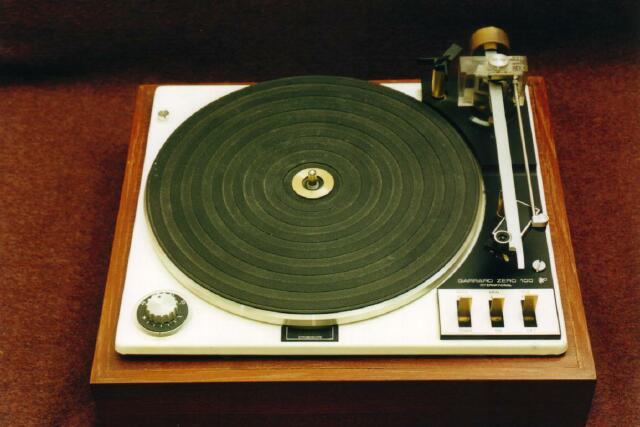The most interesting thing I saw at RMAF...
75.90.145.110 |
||
| Posted on October 20, 2012 at 19:09:21 | ||
|
Posts: 23900
Location: Central Kentucky Joined: December 20, 2000 Contributor Since: January 29, 2004 |
Frank Schröder has designed a linear tracking pivotal tonearm. He claims it has zero tracking error, zero skating force, and zero friction bearings. It appeared to work as advertised and it sounded great. The pivot-to-spindle distance decreases as the arm moves across the record in order to maintain zero tracking error. The headshell has no offset so it presumably should have no skating force. I thought it was quite intriguing and very innovative, so I'm hoping we will be able to learn more about how it works in the future. Best regards, John Elison  ..... .....  |
|
| $6000 is "very competitive" ?? [nt], posted on October 21, 2012 at 03:26:08 | |
|
Posts: 2717
Location: Zardoz Joined: March 9, 2004 |
. "Life without music is a mistake" (Nietzsche) |
| Thanks for the info. I'd like mine on your tt. Maybe after my pending first place lotto win. nt, posted on October 21, 2012 at 11:51:38 | |
| nt | |
| Since that's the case..., posted on October 21, 2012 at 12:12:45 | |
|
Posts: 10719
Joined: July 24, 2003 |
...I hope you hit that lottery. ;) |
| Also...., posted on October 21, 2012 at 14:08:53 | |
|
Posts: 5610
Location: S. Florida Joined: July 21, 2005 |
This is the first arm of its kind. Less expensive versions of it could appear one day. |
| It's in the maths., posted on October 21, 2012 at 18:10:40 | |
|
Posts: 7175
Location: Willy, VIC Joined: February 28, 2002 |
It's all laid out in the analysis I linked.
Mark Kelly |
| RE: Details, posted on October 21, 2012 at 18:45:17 | |
|
Posts: 23900
Location: Central Kentucky Joined: December 20, 2000 Contributor Since: January 29, 2004 |
Well, I think you're wrong. |
| RE: Not true., posted on October 21, 2012 at 18:46:27 | |
|
Posts: 23900
Location: Central Kentucky Joined: December 20, 2000 Contributor Since: January 29, 2004 |
Thanks, Mark. I think you're wrong. |
| Thank you! /nt\, posted on October 21, 2012 at 22:00:26 | |
|
Posts: 23900
Location: Central Kentucky Joined: December 20, 2000 Contributor Since: January 29, 2004 |
|
| Back to the 50s, posted on October 23, 2012 at 18:34:52 | |
|
Posts: 10768
Location: IL Joined: December 6, 1999 |
The arm falls into a tradition that goes back to the 1950s: pivoted arms that are capable of 0 degrees tangential error. There is an extensive thread with lots of photos and diagrams on DIYaudio. The thread also discusses some of the issues with this approach. The Schroeder arm showed up about a year ago in that thread. Brian Walsh |
| Looks more interesting than a unipivot. Nt, posted on October 23, 2012 at 19:38:04 | |
|
Posts: 1708
Location: N East, USA Joined: July 21, 2005 |
Nt |
| No comparison whatsoever! /nt\, posted on October 23, 2012 at 19:45:38 | |
|
Posts: 23900
Location: Central Kentucky Joined: December 20, 2000 Contributor Since: January 29, 2004 |
|
| ...even a $15k unipivot? Nt, posted on October 24, 2012 at 07:42:39 | |
|
Posts: 1708
Location: N East, USA Joined: July 21, 2005 |
;-) |


